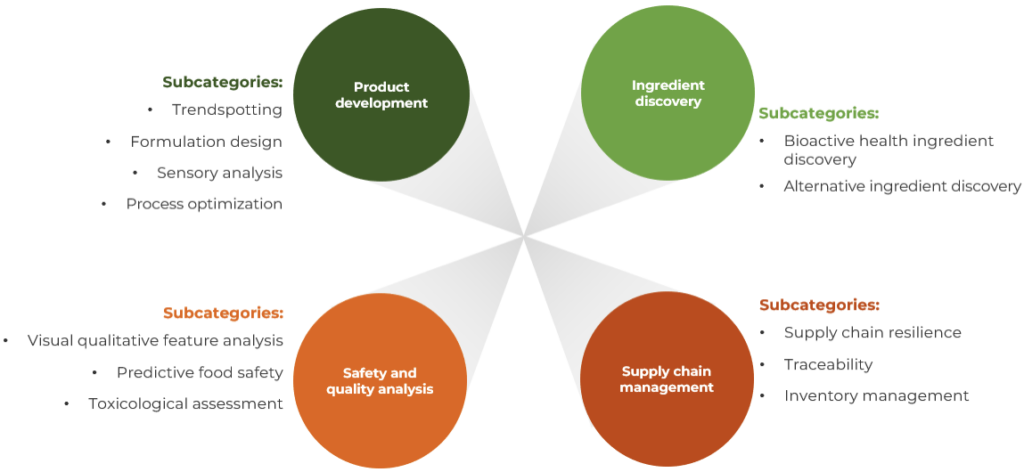In the rapidly evolving landscape of AI, particularly with the emergence of generative AI technologies, interest is growing in leveraging AI’s potential within CPG. This transformation isn’t merely about adopting new technologies but also involves a paradigm shift in how products are developed, marketed, and delivered to consumers.
Realizing the full spectrum of AI’s benefits requires a proactive approach to urgently identify and adopt transformative opportunities. The fast-paced development in AI means that what’s cutting edge today could become standard practice tomorrow. Therefore, CPG businesses must stay abreast of the latest advances in AI and critically assess how they can integrate these technologies into their operations to drive efficiency and innovation, streamline processes, and create value for customers. Given AI’s potential, it’s urgent and crucial for CPG companies to pinpoint viable use cases where AI can maximize opportunities and provide action-oriented strategies.
AI in the product development life cycle
In the figure below, we’ve identified areas where AI can change incumbent methods that span the entire new-product-development life cycle: discovery, formulation, quality analysis, supply chain inventory, and traceability.

AI’s predictive capabilities can accelerate the ideation and creation of new products by analyzing consumer trends, preferences, and market gaps, enhancing the likelihood of successful market introduction. Leveraging AI can streamline product formulation by predicting the outcomes of different ingredient combinations. It can also help reformulate existing products to meet emerging consumer demands, such as reduced sugar or salt, without compromising taste or texture. AI technologies can enhance the discovery of new, sustainable, and cost-effective ingredients by sifting through vast databases of compounds to identify those with desired properties. As exemplified in Brightseed‘s technology, companies can discover ingredients that were previously unknown and might have remained so without the use of AI. Further down the line, once a new product is formulated and ready for quality analysis, there are AI-augmented methods to facilitate the process, such as implementation of AI-assisted sensors or the in situ implementation of hyperspectral imaging to identify faulty products on the production line. Lastly, AI can enhance supply-chain-related use-cases, including risk analysis and predictions, traceability, and inventory management.
Adoption strategies
CPG brands need to identify the right adoption strategies to be able to leverage AI effectively. Specific use-cases may be best addressed through in-house development, necessitating that companies build their own AI capabilities. This approach often requires a significant transformation in data collection and management. Historically, CPG and food companies have relied on traditional methods, such as Excel spreadsheets, for data gathering. To fully harness AI, however, data collection has to be streamlined, ensuring that data are in a format readily accessible and utilizable by AI systems. A comprehensive data strategy becomes indispensable in this context; it’s the foundation for successful implementation of AI.
On the other hand, there are scenarios where forging external partnerships with AI startups is more advantageous. This is particularly true for projects aiming to develop niche and innovative products outside a company’s core expertise. For instance, a traditional dairy company venturing into developing alternative dairy products might find it more economical to outsource AI know-how. Collaborating with external specialists can achieve more cost-effective and targeted outcomes in such cases.
Ultimately, while AI could potentially drive innovation, its most immediate impact for many CPG brands lies in enhancing operational efficiency. Efficiency gains — potentially 30%-50% — represent a compelling value proposition, particularly for bigger CPG players. However, the scale of investment required for AI adoption may not be justifiable for smaller companies, where the cost-benefit analysis might not align with their strategic priorities. CPG brands need to understand these dynamics as they navigate the complexities of integrating AI into their operations, ensuring that their approach is economically rational and aligned with their broader strategic goals.
